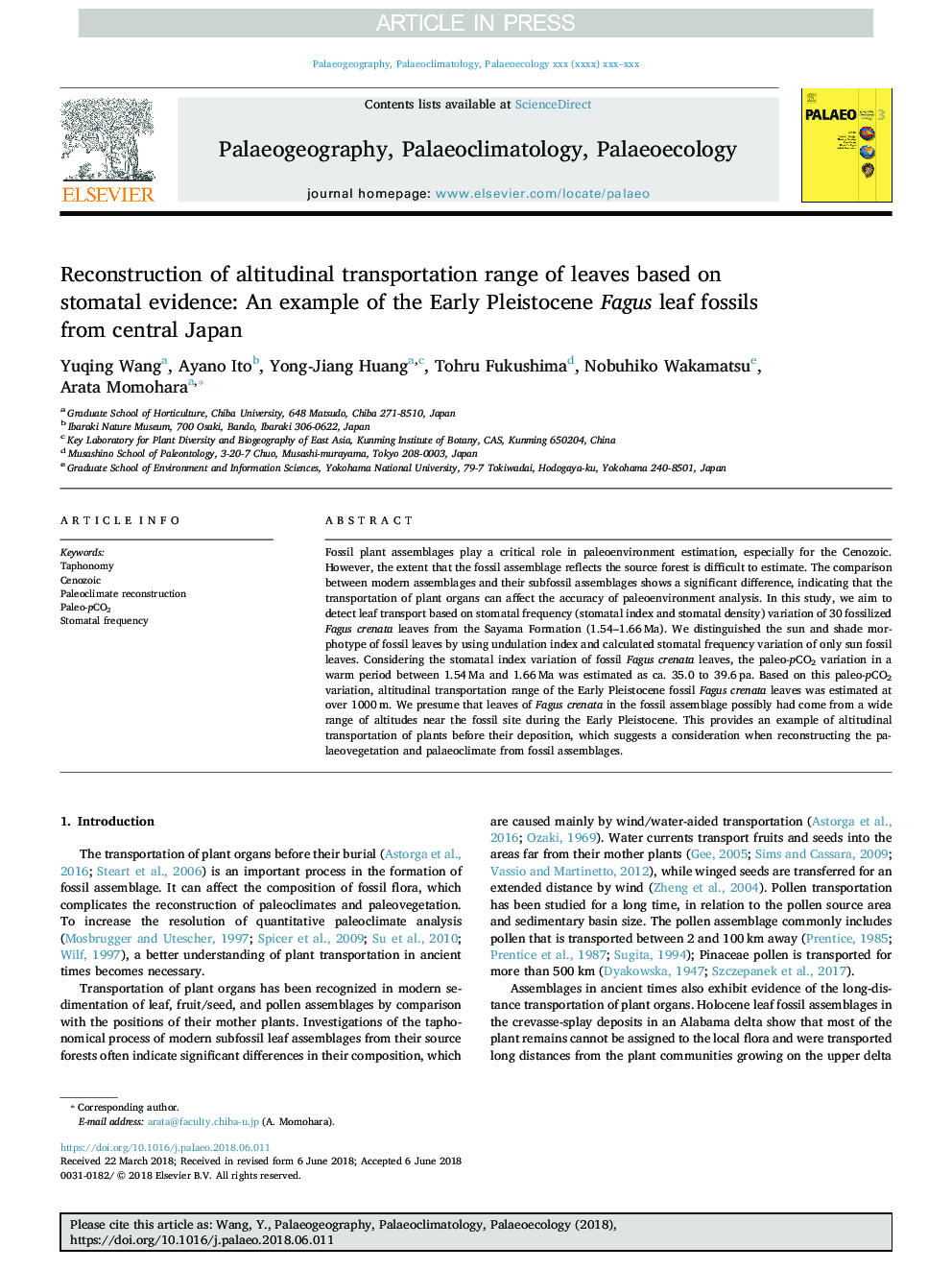| Article ID | Journal | Published Year | Pages | File Type |
|---|---|---|---|---|
| 8868163 | Palaeogeography, Palaeoclimatology, Palaeoecology | 2018 | 9 Pages |
Abstract
Fossil plant assemblages play a critical role in paleoenvironment estimation, especially for the Cenozoic. However, the extent that the fossil assemblage reflects the source forest is difficult to estimate. The comparison between modern assemblages and their subfossil assemblages shows a significant difference, indicating that the transportation of plant organs can affect the accuracy of paleoenvironment analysis. In this study, we aim to detect leaf transport based on stomatal frequency (stomatal index and stomatal density) variation of 30 fossilized Fagus crenata leaves from the Sayama Formation (1.54-1.66â¯Ma). We distinguished the sun and shade morphotype of fossil leaves by using undulation index and calculated stomatal frequency variation of only sun fossil leaves. Considering the stomatal index variation of fossil Fagus crenata leaves, the paleo-pCO2 variation in a warm period between 1.54â¯Ma and 1.66â¯Ma was estimated as ca. 35.0 to 39.6â¯pa. Based on this paleo-pCO2 variation, altitudinal transportation range of the Early Pleistocene fossil Fagus crenata leaves was estimated at over 1000â¯m. We presume that leaves of Fagus crenata in the fossil assemblage possibly had come from a wide range of altitudes near the fossil site during the Early Pleistocene. This provides an example of altitudinal transportation of plants before their deposition, which suggests a consideration when reconstructing the palaeovegetation and palaeoclimate from fossil assemblages.
Related Topics
Physical Sciences and Engineering
Earth and Planetary Sciences
Earth-Surface Processes
Authors
Yuqing Wang, Ayano Ito, Yong-Jiang Huang, Tohru Fukushima, Nobuhiko Wakamatsu, Arata Momohara,
